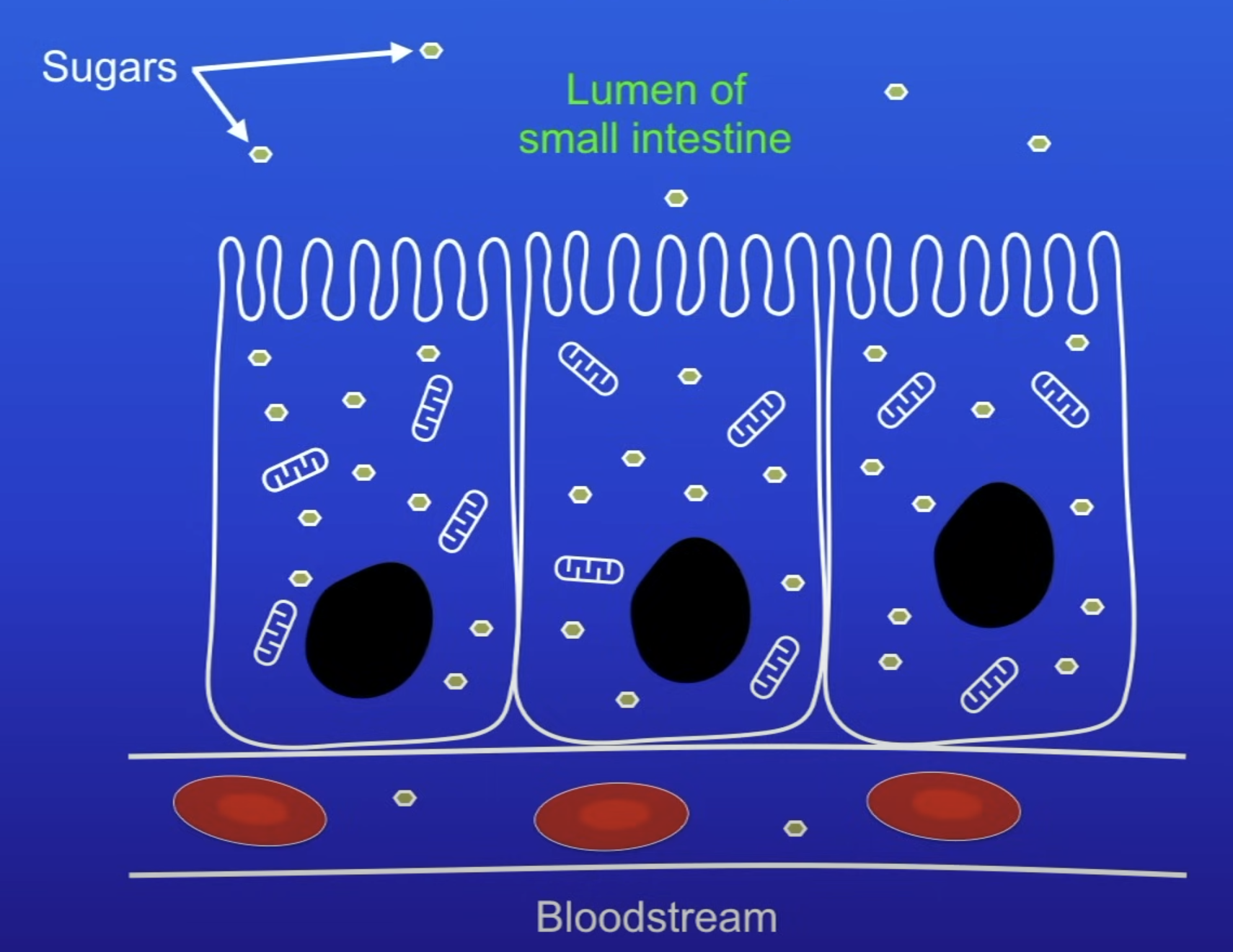B1: Cell structure and transport
1/137
There's no tags or description
Looks like no tags are added yet.
Name | Mastery | Learn | Test | Matching | Spaced |
|---|
No study sessions yet.
138 Terms
Examples of eukaryotes
Plants
Animals
Eukaryotic cells
Contain genetic material (DNA) enclosed in a nucleus
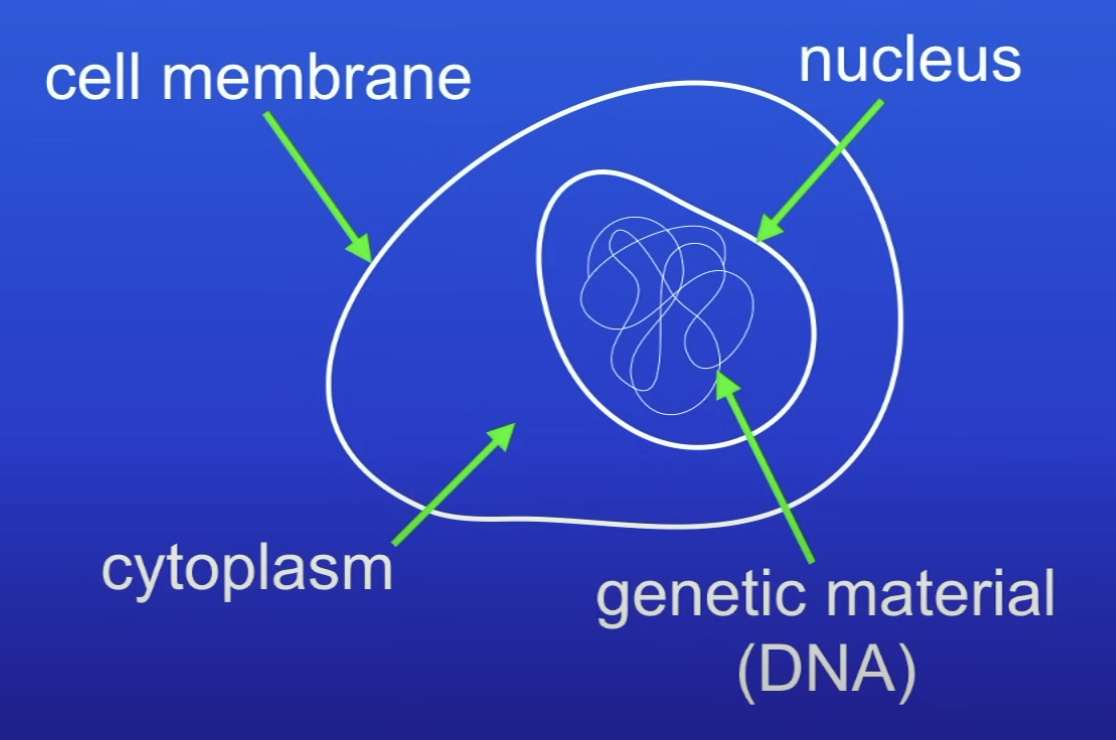
Features of eukaryotic cells (animal + plant cells)
Cell membrane
Cytoplasm
Genetic material enclosed in a nucleus
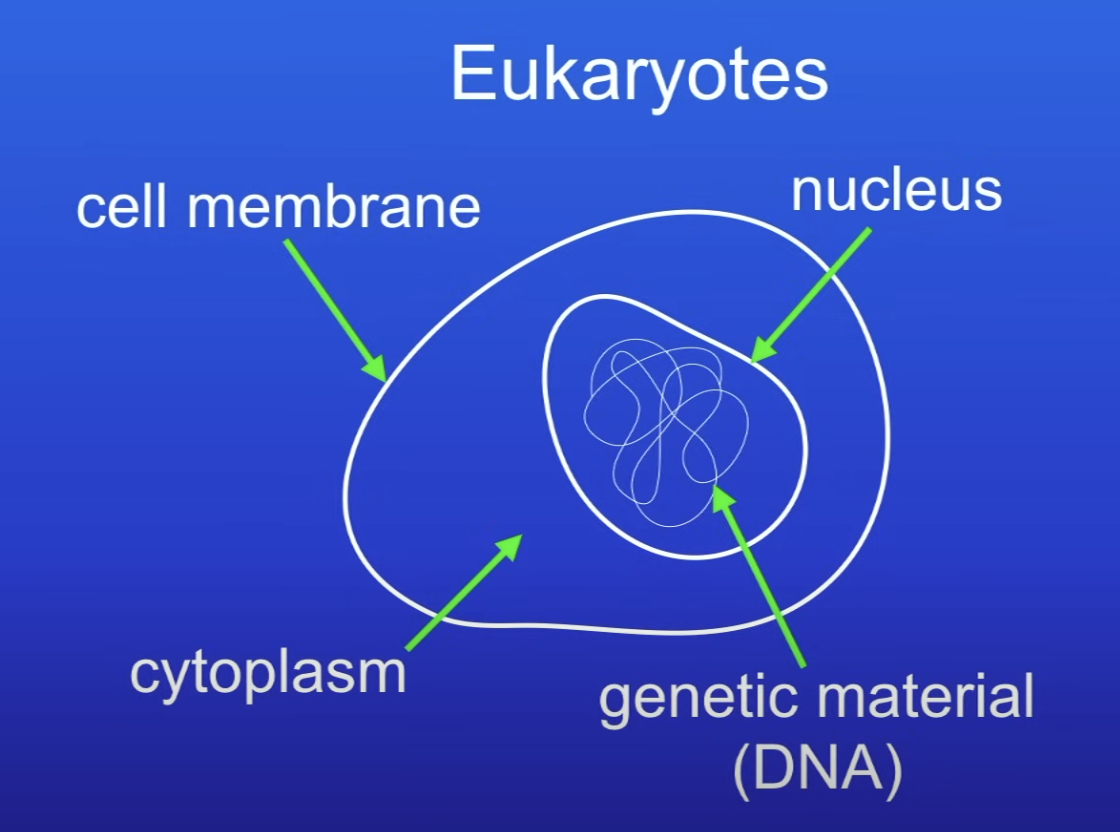
Examples of prokaryotes
Bacteria
Prokaryotic cells
Genetic material (DNA) isn’t enclosed in a nucleus
Are prokaryotic cells bigger or smaller than eukaryotic cells?
Much smaller
Features of prokaryotic cells
Cytoplasm
Cell membrane
Cell wall
Single DNA loop
+ may be 1 or more small rings of DNA (plasmids)

Plasmids
Small rings of DNA in prokaryotic (bacterial) cells
How is genetic material found in prokaryotic cells?
Single loop of DNA
+ 1 or more plasmids
GM not enclosed in a nucleus
Express these units in terms of a metre
cm- centimetre
mm- millimetre
μm- micrometre
nm- nanometre
1 cm = 1 × 10-2 m (1/100 of a m)
1 mm = 1 × 10-3 m (1/1 000 of a m)
1 μm = 1 × 10-6 m (1/1 000 000 of a m)
1 nm = 1 × 10-9 m (1/1 000 000 000 of a m)
Size of a typical human cell
10-20 μm
1 order of magnitude
10x
2 orders of magnitude
100x
How much greater is every order of magnitude compared to the one before?
10x greater
How can you find out the order of magnitude?
Count the no. of 0’s
10x = 1 OoM
100x = 2 OoM
1000x = 3 OoM
Parts of a basic animal cell
Nucleus
Cytoplasm
Cell membrane
Mitochondria
Ribosomes
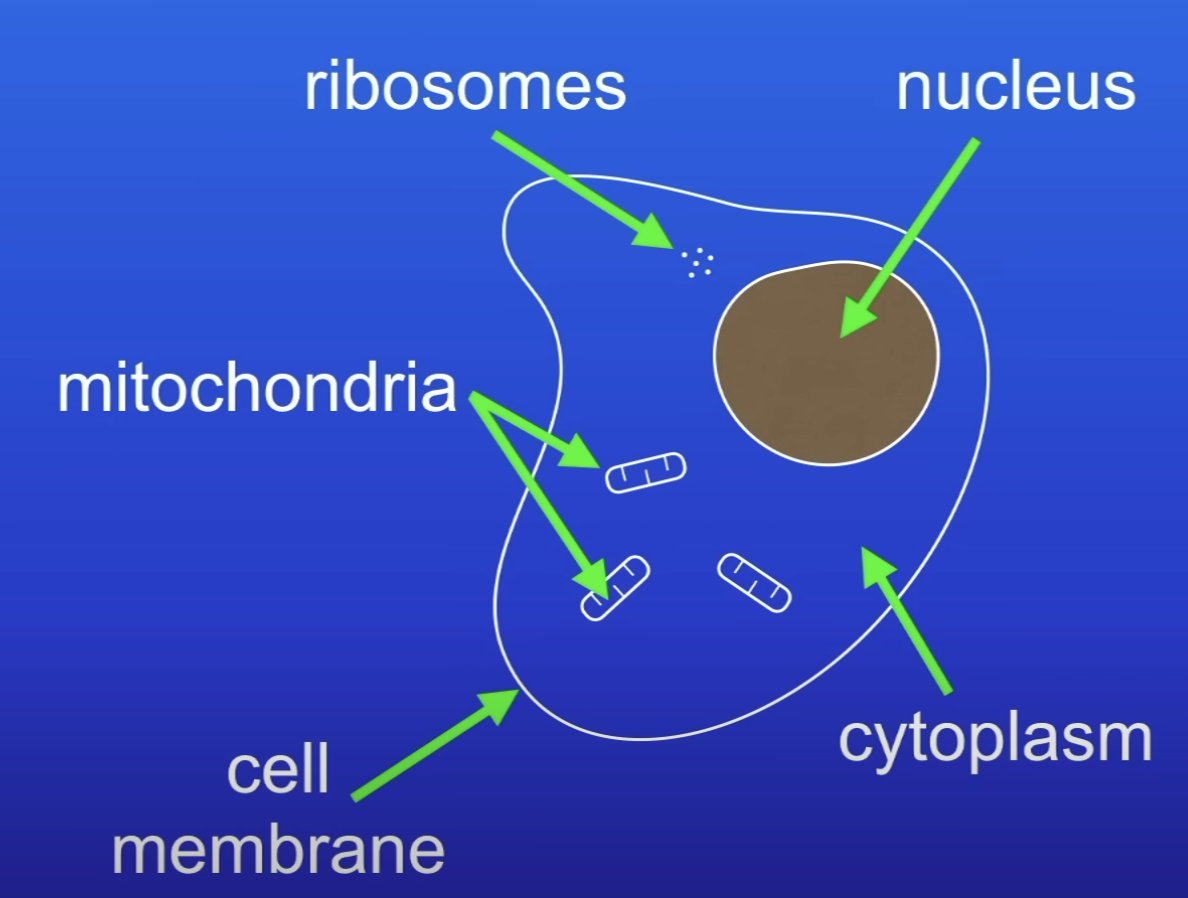
Nucleus
Encloses genetic material
Cytoplasm
Watery solution where chemical reactions take place
Eg 1st stage of respiration
Cell membrane
Controls the molecules that can enter + leave the cell
Mitochondria
Site of aerobic respiration
Ribosomes
Site of protein synthesis
Can ribosomes be viewed with a light microscope?
No- electron microscope needed
Parts of a plant cell
Same as animal cell + 3 extra
Nucleus
Cytoplasm
Cell membrane
Mitochondria
Ribosomes
Chloroplasts
Cell wall
Permanent vacuole
Do plant and animal cells have a regular shape?
PC- regular shape
AC- can change shape easily
Chloroplasts
Contain chlorophyll + site of PS
What are plant cell walls made of?
Cellulose
Cell wall
Strengthens the cell
Made of cellulose
Algae
Simple aquatic forms of plant life
What is the vacuole filled with?
A fluid- cell sap
Vacuole
Packed with cell sap
Helps give plamt cell its shape
Example of specialised animal cells
Sperm cells
Nerve cells
Muscle cells
RBC
Are most animal + plant cells specialised or unspecialized?
Specialised
What does it mean if a cell is specialised?
Cell has adaptations that help then carry out their particular function
Differentiation
When cells become specialised
Job of a sperm cell
Fertilisation- join with an ovum (egg cell)
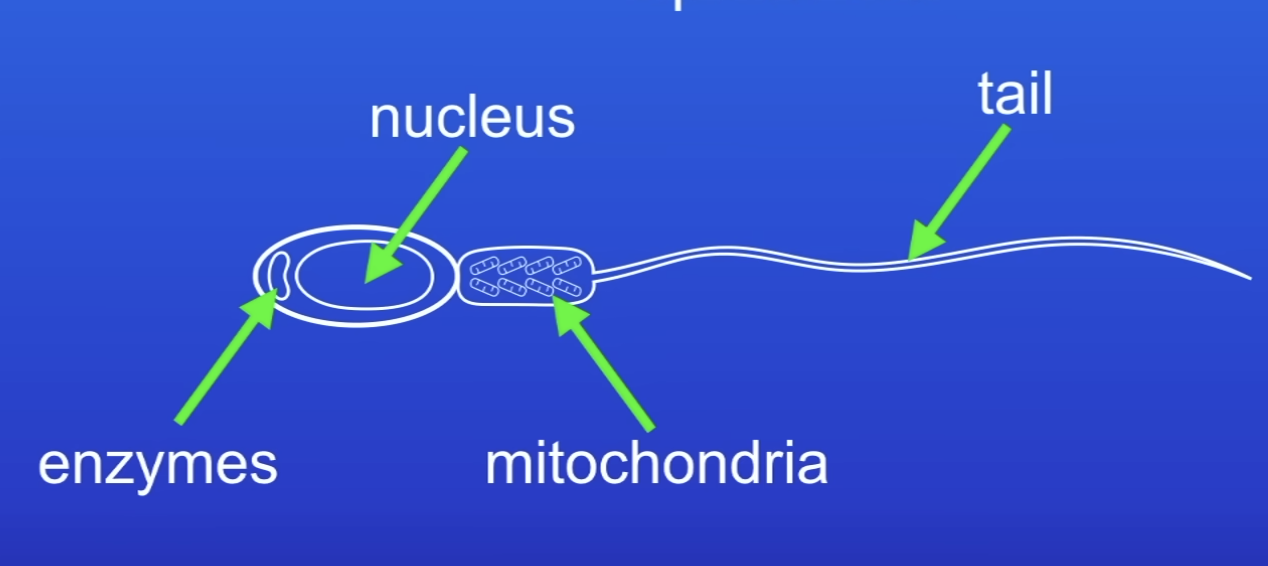
During fertilisation what happens in terms of genetic info?
Genetic info of ovum + sperm combine
Adaptations of sperm cells
Contain only ½ the genetic info of a normal adult cell
Long tail + streamlined- helps swim to ovum
Packed full of mitochondria- provide energy needed for swimming
Contain enzymes- allow them to digest their way thru the outer layer of the ovum
Job of a nerve cell
Send electrical impulses around the body

Adaptations of a nerve cell
Long axon- carries EI from one part of the body to another
Myelin insulates the axon- speeds up transmission of nerve impulses
Synapses at end of axon- allow impulses to pass from 1 nerve cell to another
Dendrites on cell body- increase SA → other NC can connect easier
Synapses
Junctions that allow an impulse to pass from 1 nerve cell to another
What can muscles cells do?
Contract (get shorter)
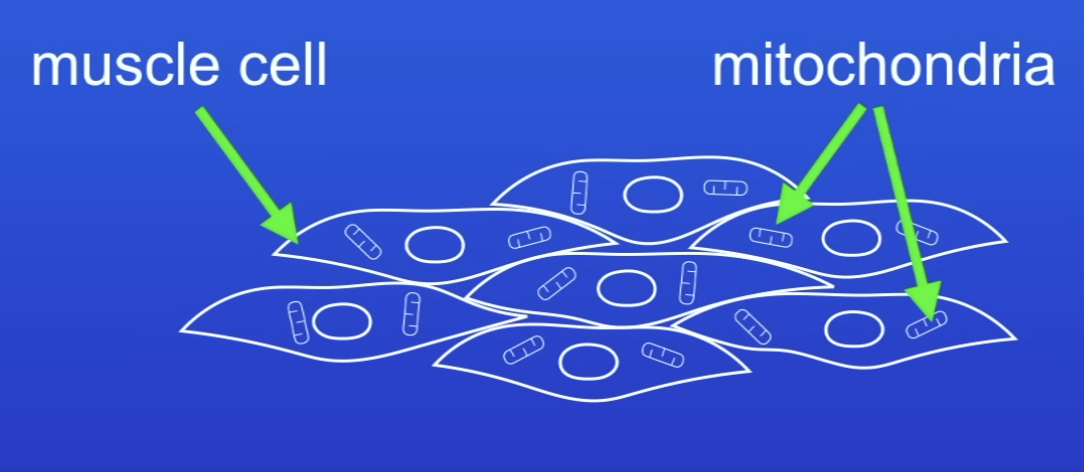
What allows muscle cells to contract?
Contain protein fibres that can change their length
What happens when a muscle cell contracts?
Protein fibres get short → decreases length of MC
Adaptations of a muscle cell
Contain special protein fibres- can get shorter so MC contracts
Packed full of mitochondria- provides lots of energy for muscle contraction
Store glycogen- broken down + used in cellular respiration by mitochondria to transfer energy needed for fibres to contract
Do muscle cells work alone or in groups?
MC work tog to form muscle tissue
What happens as an animal cell differentiates to form a specialised cell?
It gets diff subcellular structures to enable it to carry out a certain function
Examples of specialised plant cells
Root hair cells
Xylem cells
Phloem cells
Structures present in a plant cell, but not animal cell
Chloroplasts
Cellulose cell wall
Permanent vacuole
Role of root hair cell
Helps plant cell take up water + MI more efficiently
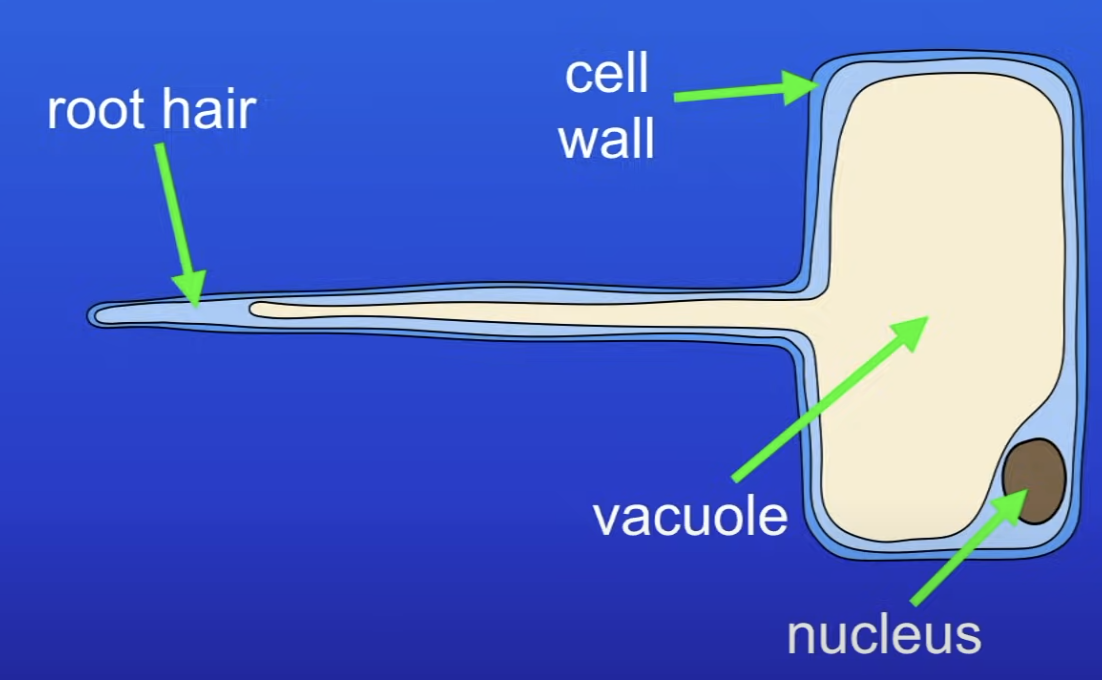
What do hairs covering roots do?
Increase SA of root → so it can absorb water + dissolved MI more effectively
Adaptations of root hair cells
Root hair- increases SA of root → root can absorb water + dissolved MI more effectively
No chloroplasts- they are underground (no light), can’t carry out PS
Lots of mitochondria- transfer lots energy needed for AT of MI
Large permanent vacuole- speeds up movement of water by osmosis from the soil across the RHC
Why do root hair cells not have chloroplasts
Chloroplasts contain chlorophyll- site of PS
PS needs energy from light
RHC = underground → no light → no PS
Where are xylem found?
Plant stem
Role of xylem
Form tubes that carry water + dissolved MI from roots to leaves
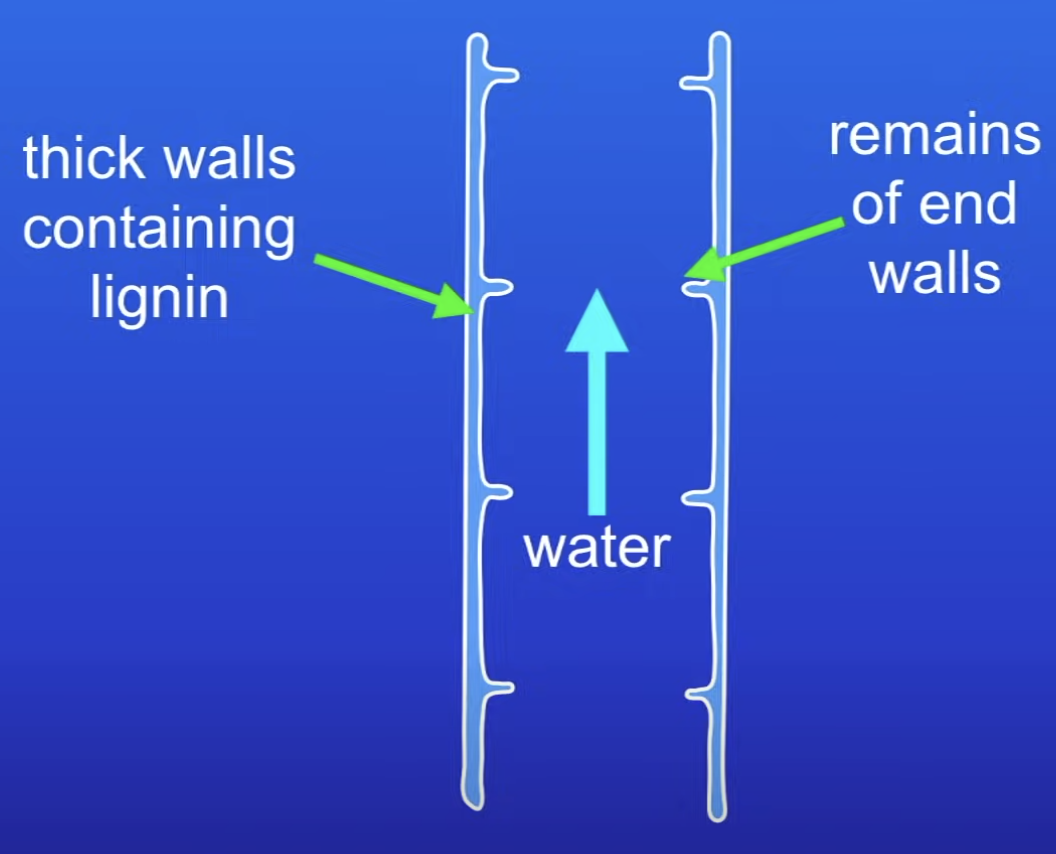
Adaptations of xylem cells
V thick walls containing lignin- provides support to the plant
End walls betw cells have broken down- cell forms a long tube → easier for water + dissolved MI
No internal structures (nucleus, cytoplasm, vacuole, chloroplasts)- easier for water + MI to flow
What causes xylem cells to die?
Lignin
Role of phloem cells
Phloem tubes carry dissolved sugars up + down the plant
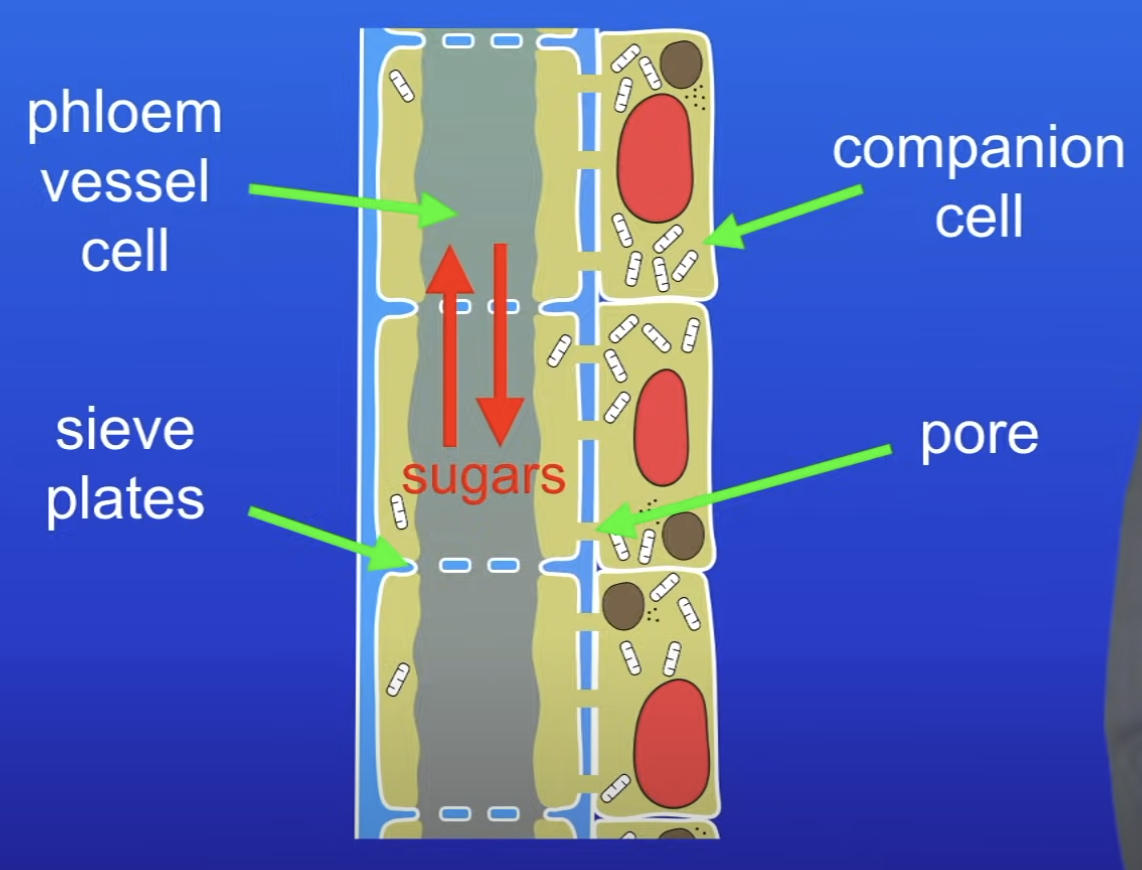
How many diff types of cells does phloem consist of?
2
Phloem vessel cells + companion cell
Phloem vessel cells
No nucleus + limited cytoplasm
Adaptations of phloem cells
PVC have sieve plates + no nucleus- allow dissolved sugars to. move thru the cell interior
Mitochondria in CC- provide energy to PVC
Sieve plates
Pores on the end walls of PVC
Why do phloem vessel cells need a companion cell?
PVC have limited cytoplasm = don’t have many mitochondria
How is a companion cell connected to a PVC?
Pores
Role of red blood cells
Transport O2 needed for AR in body cells
Adaptations of RBC
Biconcave shape- high SA:V → increases diffusion.
Lots of haemoglobin- binds O2
No nucleus- more space for haemoglobin to bind O2
Thin membrane- short diffusion pathway
What can substances do via diffusion?
Move into + out of cells across cell membranes
Diffusion
The spreading out of particles, resulting in a net movement from an area of higher conc to an area of lower conc
Down a CG → no energy needed
Molecules that move in + out of cells via diffusion
Oxygen (in gas exchange)
Carbon dioxide (in GE)
Urea
What do cells need oxygen for?
Generate energy by respiration
Carried out by mitochondria
Are cells surrounded by a high or low conc of oxygen and why?
High O2 conc
O2 transported in BS from lungs
How does oxygen move in and out of cells via diffusion?
Start: higher O2 conc out cells, lower conc inside
O2 molecules move into the cell by diffusion- from an area of higher conc to an area of lower conc
O2 then used to generate energy in respiration
Produces waste gas CO2
What waste gas is produced in respiration?
Carbon dioxide
How does carbon dioxide move out of cells?
Start: higher conc of CO2 inside cell, than outside
CO2 moves out of the cell by diffusion
Urea
Waste product produced inside cells
How does urea move out of cells by diffusion?
Diffuses out of cells into blood plasma
Excreted by kidneys
How is urea excreted?
By kidneys
Factors affecting rate of diffusion
Conc gradient- difference in concs
Temperature
SA of the membrane
Factors increasing rate of diffusion (faster)
Greater CG
Higher temp
Larger SA of cell membrane
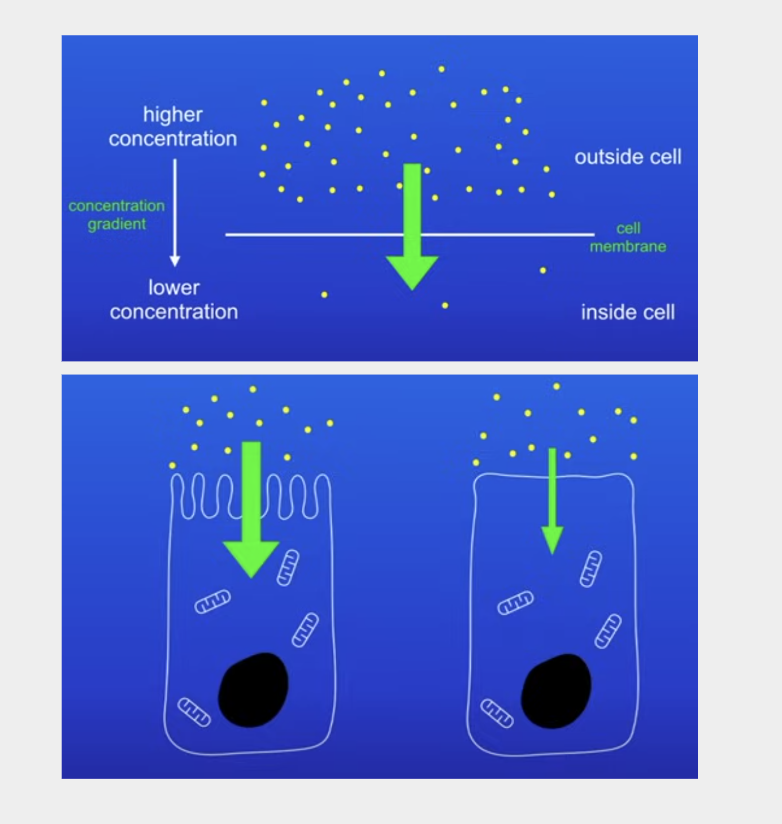
Why is the rate of diffusion increased at a higher temp?
Particles have more KE
So are moving faster
What molecule can move across cell membranes via osmosis?
Water
Osmosis
Diffusion of water from a dilute solution to a concentrated solution thru a partially permeable membrane
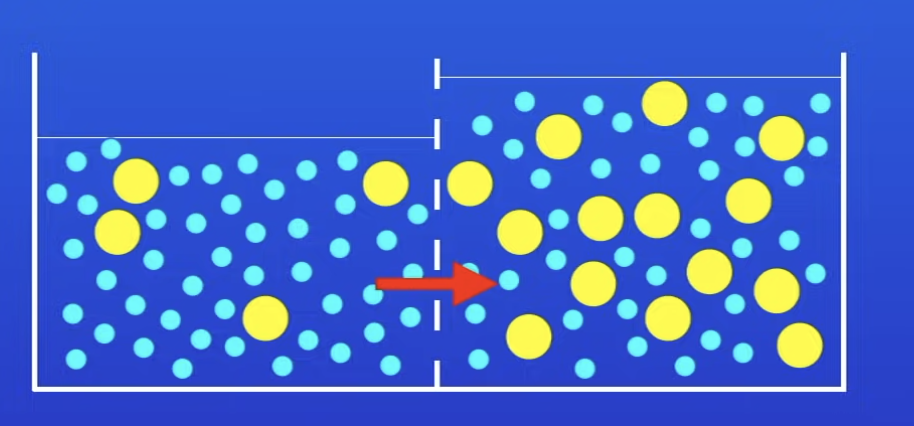
Do dilute and concentrated solutions have a high or low water conc?
Dilute: high
Concentrated: low
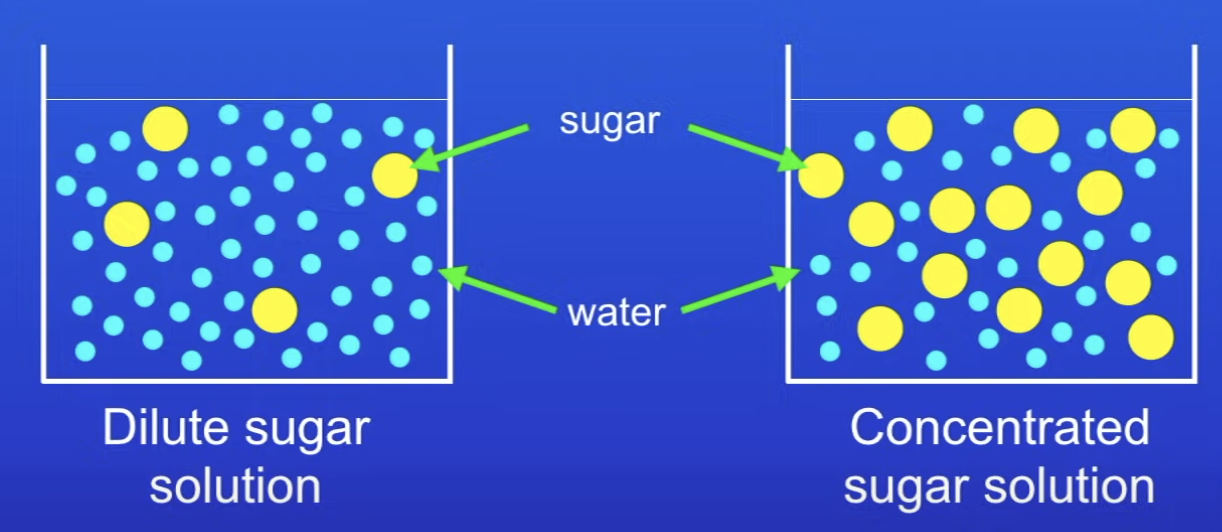
Partially permeable membrane
Only allow some molecules to pass thru

Is the cytoplasm of cells a relatively dilute or concentrated solution?
Concentrated
Contains low water conc
What happens if you place an animal cell in water?
Water moves by osmosis from outside the cell to inside the cell
Causes it to expand
What happens when water moves into an animal cell?
Expands or bursts
What happens if you place an animal cell in a v concentrated solution?
Water moves out of the cell by osmosis
Cell will shrink
What happens if you place a plant cell in water?
Water moves into the cell by osmosis
Cell expands
Will a plant cell burst when water moves in?
No
Cell wall prevents plant cell from bursting
Cell becomes swollen (turgid)
What does the cell wall prevent in plant cells?
Cell from bursting
What happens if you place a plant cell in a concentrated solution?
Water moves out of the cell by osmosis
Cell shrinks (becomes flaccid)
Isotonic
Hypertonic
Hypotonic
Conc of solutes in the solution outside the cell is the … as internal conc
Same
Higher
Lower
How do plants rely on osmosis for support?
Water moves into plant cells by osmosis
Vacuole swells → pushes cytoplasm against cell wall
Turgor- pressure builds up until no more water can enter the cell
Pressure makes PC rigid → keeps stem + leaves upright
Why is osmosis important in plant cells?
Maintain turgor
Active transport
Moves substances from a more dilute solution to a more concentrated solution, against a CG
Requires energy from respiration
What does AT require and where does it come from?
Energy from respiration
Diffusion vs active transport
Diffusion
Particles move down the CG
Doesn’t need energy from respiration
AT
Particles move against the CG
Needs energy from respiration
Where does active transport occur in humans?
Cells lining small intestine
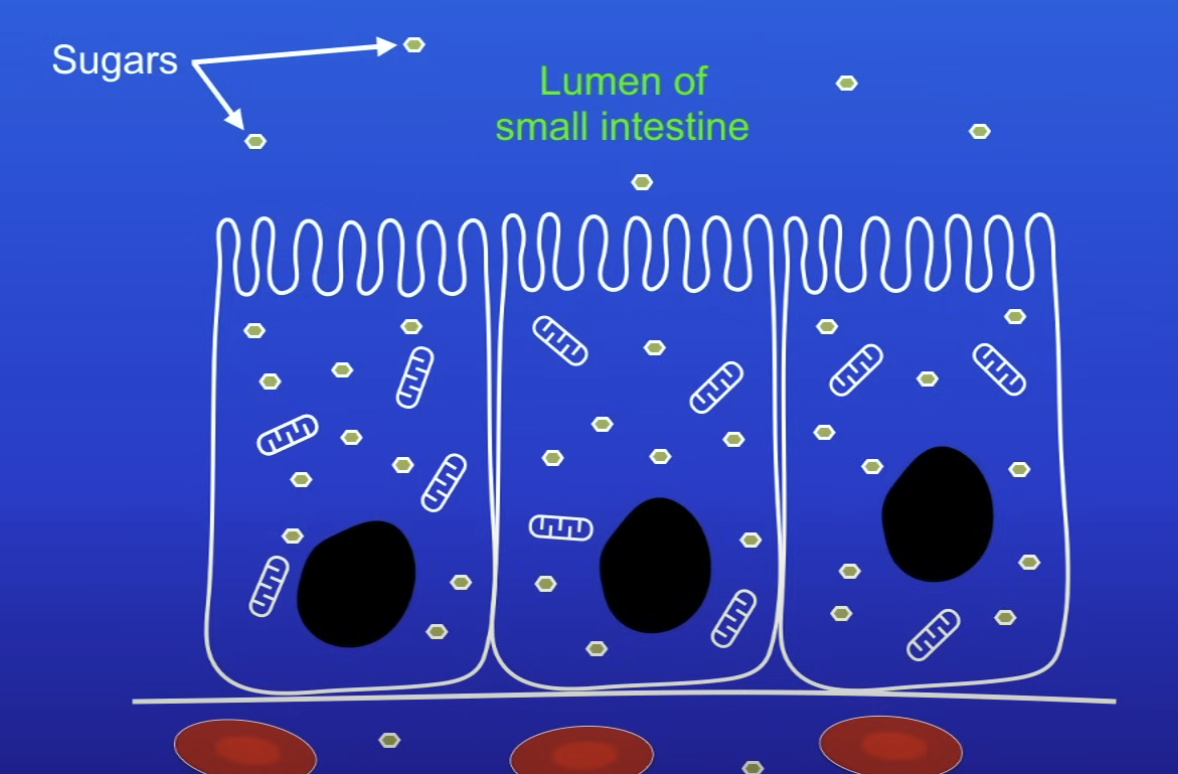
Lumen
Cavity of small intestine where food is digested
Why is active transport needed in the small intestine?
Conc of sugars in lumen is lower than conc of sugars inside the cell
→ sugars can’t diffuse into the cell
